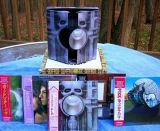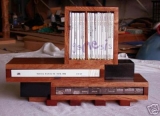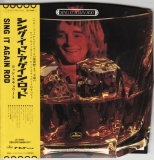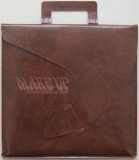|
Firstly, collectively these are often simply refered to as "unauthorised" recordings or releases.
Even that rather broad term is misleading as there are ocassionally local releases that are not meant to be exported outside the country where they are issued. Of course, if these are attractive they will wind up on eBay - especially if there's a foreign buck to be made.
Also, what the artist wants is sometimes not exactly what the recording company wants. I imagine also that sometimes a blind eye is turned - especially if the inclusion of an "unauthorised" box is likely to increase sales.
With the above in mind - here's a more traditional opinion on the difference.
| |
"Bootleg"
(or boot) |
"Pirate"
(or forgery or counterfeit) |
| General |
Material that has never been offered by the owner of the work for commercial release (nothing to do with whiskey or gin). |
An illegal copy of an official commercial release. |
| Recording |
A recording that was obtained without the artist's consent. |
An unauthorised copy of an official commercial release (eg. a CDR or tape copy of a CD or vinyl album). |
| Packaging |
Packaging that portrays an artist's work that has been designed without the artist's consent or draws on commercial designs released in another context. |
Akin to a forgery. A near exact copy of an official commercial release. |
Bootleg Recording Examples:
- The Beatles sing "Happy Birthday" at your birthday party and you tape it and sell it.
- You are the engineer at a recording studio and you obtain your own copies from recording sessions made by Brian Eno and David Byrne and release these on vinyl.
- You record an mp3 of a concert performance on your phone and share it on the net.
Pirate Recording Example:
- A tape or CDR made by a friend and given to you.
- A tape or CDR made by you for use in your car.
- A silver factory CD made to look like the real thing (usually accompanied by pirate packaging).
Bootleg Packaging Example:
- A bootleg recording, professionally presented on silver CD in glossy packaging is considered to be contained in bootleg packaging.
Pirate Packaging Example:
- A deliberate copy of the real thing, sold on ebay as if it was the original. (Ocassionally the seller may not even know it's a pirate.)
Here are some examples of a professionally produced "pirate" (both recording and packaging):
- Russian conterfeit version of Jethro Tull's Broadsword and the Beast.
- Aerosmith Pump - Real or Fake?
Here is an example of how confusing and even morally challenging it can all be: Exciting The Who. This is a professionally produced unauthorised release, containing pirate CDs (copies of real studio recordings) each CD housed in mini-LP packaging. Even those these covers mimic official Japanese LP releases, they have never officially been released as CD covers. Does this mean the covers are pirates or bootlegs? Who knows?
In reality though the artist is unlikely to have received any royalties for this release. Despite this, many (perhaps most?) collectors would agree it's a lovely item and would like to own it.
Generally speaking in the Mini-LP world
Most promo boxes are just that - an outer box designed to hold the real thing and originally "given away" as an incentive to buy the full set of current releases.
Further Reading
UK second hand dealer "More Music" has a series of nice articles on both the history of bootlegs and recording piracy.
To quote "While Collectors have a healthy respect for the bootlegger, piracy has few friends. Pirates are generally second generation copies, while the fan may get a pirate cheaply, they are unlikely to get a quality recording, even less likely to get the full sleeve and artwork ... whatever you think of the global record companies, they do pay royalties to the artists you like, manufacturers of pirates do not; they are wholly parasitic on the music industry." |






